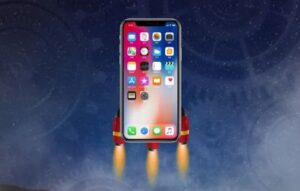Iconic figures and their characteristics
Animated villains like Cruella de Vil and Scar stand out for their unique personalities that bring depth and tension to the stories.
These iconic characters represent universal human conflicts, making the storylines memorable and full of meaning.
Their visual design and psychological characteristics make them recognizable symbols that transcend time and generations.
Cruella de Vil: sophisticated evil
Cruella de Vil is known for her obsession with Dalmatian furs, showing a dark side wrapped in elegance.
Her extravagant style and ruthless attitude reflect a sophisticated evil that sets her apart from other villains.
This character combines glamour and cruelty, symbolizing greed and unbridled desire in an unforgettable figure.
Scar and the family betrayal
Scar is the villain who personifies betrayal within the family circle, motivated by ambition and jealousy.
Their manipulation and lust for power show how darkness can emerge even in the closest relationships.
With a complex personality, Scar enriches the story by generating a deep emotional conflict with the protagonists.
Themes and symbolism behind the villains
Animated villains embody profound topics and symbolism that goes beyond simple evil. They represent internal forces and universal dilemmas.
These antagonists reflect fears, ambitions and complex emotions, giving the stories a richer and more meaningful level of interpretation.
Through their actions and motivations, they explore concepts such as corruption, revenge and redefinition of good and evil.
Ambition and corruption represented by Jafar
Jafar symbolizes the excessive ambition and corruption, using manipulation to achieve absolute power.
Their cunning and desire for political control show how corruption can corrupt values and loyalties in the pursuit of dominance.
This villain represents the darkness that emerges from the lust for power, unleashing devastating consequences for those around him.
Interesting fact about Jafar
Jafar was originally inspired by real historical figures, which amplifies his role as a symbol of political corruption.
Revenge and power in Ursula
Ursula embodies the revenge and the quest for power from a position of marginalization and resentment.
Their manipulation and magical hiring reflect unbridled ambition and a desire to reverse perceived injustices.
This character personifies how pain and anger can transform into a destructive force.
Redefining evil with Maleficent
Maleficent defies clichés by showing a complex evil, mixing vulnerability and personal tragedy.
His story reveals that villains can have understandable motives, humanizing the darkness within them.
Thus, Maleficent redefines traditional notions of villainy, contributing emotional depth and nuances to his character.
Impact of villains on animated stories
Animated villains are essential to the development of the story, creating conflicts that drive the action and the growth of the protagonists.
Their presence adds tension and dynamism to the plot, allowing the heroes to face challenges that test their character and values.
Furthermore, these antagonists encourage the exploration of profound themes, enriching the viewer's emotional experience.
Character development through conflict
The villains force the protagonists to overcome obstacles, revealing their strengths and weaknesses in the process.
These struggles allow the heroes to evolve, transforming into more complex and complete characters.
Without the antagonist, the protagonist's journey would lack the tension necessary to generate interest and empathy.
Thus, the conflict with the villain is the driving force behind the narrative and the hero's personal growth in the story.
Emotional and moral exploration
Animated villains invite reflection on ethical dilemmas and deep human emotions, such as envy, power, and redemption.
These figures represent the inner shadows that dwell in everyone, generating empathy and understanding towards their motives.
Through them, the stories explore the duality between good and evil, enriching the moral message of the plot.
Cultural legacy of animated villains
Animated villains have significantly influenced popular culture, leaving visible marks in multiple creative areas.
Their style, personality, and symbolism have transcended the screen to become benchmarks that inspire fashion and contemporary art.
This cultural legacy reflects how evil personified in these characters can be admired and reinterpreted.
Influence on fashion and art
Villains like Cruella de Vil have set trends with their unique aesthetic, influencing designers and fashion collections.
The dramatic and bold style of these characters inspires visual art, photography, and graphic design in various forms.
This cultural impact transforms evil into a creative expression that challenges norms and celebrates individuality.
Villains as cultural icons
Characters like Scar, Maleficent, and Jafar have become recognizable symbols that represent complex and universal ideas.
Its presence in popular culture goes beyond entertainment, enriching references in literature, film, and digital media.
These villains are constantly remembered and reinterpreted, cementing their place as icons of history and culture.





